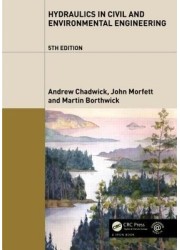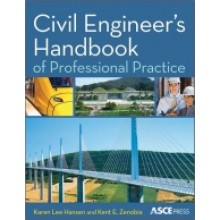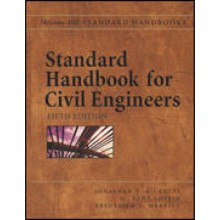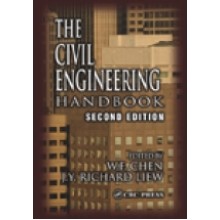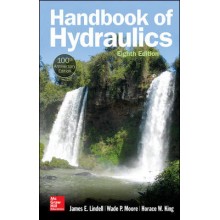|
Now in its fifth edition, Hydraulics in Civil and Environmental Engineering combines thorough coverage of the basic principles of civil engineering hydraulics with wide-ranging treatment of practical, real-world applications.
This classic text is carefully structured into two parts to address principles before moving on to more advanced topics. The first part focuses on fundamentals, including hydrostatics, hydrodynamics, pipe and open channel flow, wave theory, physical modeling, hydrology, and sediment transport. The second part illustrates the engineering applications of these fundamental principles to pipeline system design; hydraulic structures; and river, canal, and coastal engineering—including up-to-date environmental implications. A chapter on computational hydraulics demonstrates the application of computational simulation techniques to modern design in a variety of contexts.
What’s New in This Edition
- Substantive revisions of the chapters on hydraulic machines, flood hydrology, and computational modeling
- New material added to the chapters on hydrostatics, principles of fluid flow, behavior of real fluids, open channel flow, pressure surge in pipelines, wave theory, sediment transport, river engineering, and coastal engineering
- The latest recommendations on climate change predictions, impacts, and adaptation measures
- Updated references
Hydraulics in Civil and Environmental Engineering, Fifth Edition is an essential resource for students and practitioners of civil, environmental, and public health engineering and associated disciplines. It is comprehensive, fully illustrated, and contains many worked examples. Spreadsheets and useful links to other web pages are available on an accompanying website, and a solutions manual is available to lecturers.
|
|
| Contents:
Chapter 1 Introductory Notes
Chapter 2 Principal Symbols
Part 1 Principles and Basic Applications
Chapter 3 Hydrostatics
Chapter 4 Principles of Fluid Flow
Chapter 5 Behaviour of Real Fluids
Chapter 6 Flow in Pipes and Closed Conduits
Chapter 7 Open Channel Flow
Chapter 8 Pressure Surge in Pipelines
Chapter 9 Hydraulic Machines
Chapter 10 Wave Theory
Chapter 11 Sediment Transport
Chapter 12 Flood Hydrology
Chapter 13 Dimensional Analysis and the Theory of Physical Models
Part 2 Aspects of Hydraulic Engineering
Chapter 14 Pipeline Systems
Chapter 15 Hydraulic Structures
Chapter 16 Computational Hydraulics
Chapter 17 River and Canal Engineering
Chapter 18 Coastal Engineering
Chapter 19 Postscript
Appendix: Moments of Area
Index
|


